My first stop in South America was the Argentinian capital, Buenos Aires. Known for being the birthplace of Tango, this lively city didn’t disappoint! My first impression of the city actually came from a lovely elderly lady named Marta who sat next to me on the plane. She was from Buenos Aires and was incredibly sweet and told me which places were the best to visit in the city. She also helped me to get my transportation to the city center from the airport sorted out. Its always nice when friendly locals take time to help out travelers! I just wish I had snapped a picture with her.

I stayed in the Recoleta area of Buenos Aires, famous for the cemetery at it’s center which serves as the resting place for the elite of Buenos Aires. The cheapest plots in this cemetery go for about half a million dollars, and that is just for a 3 ft x 9ft chunk of ground! The cemetery is loaded with over-the-top mausoleums which give it a very interesting ambiance. I’ve never seen a cemetery quite like it.
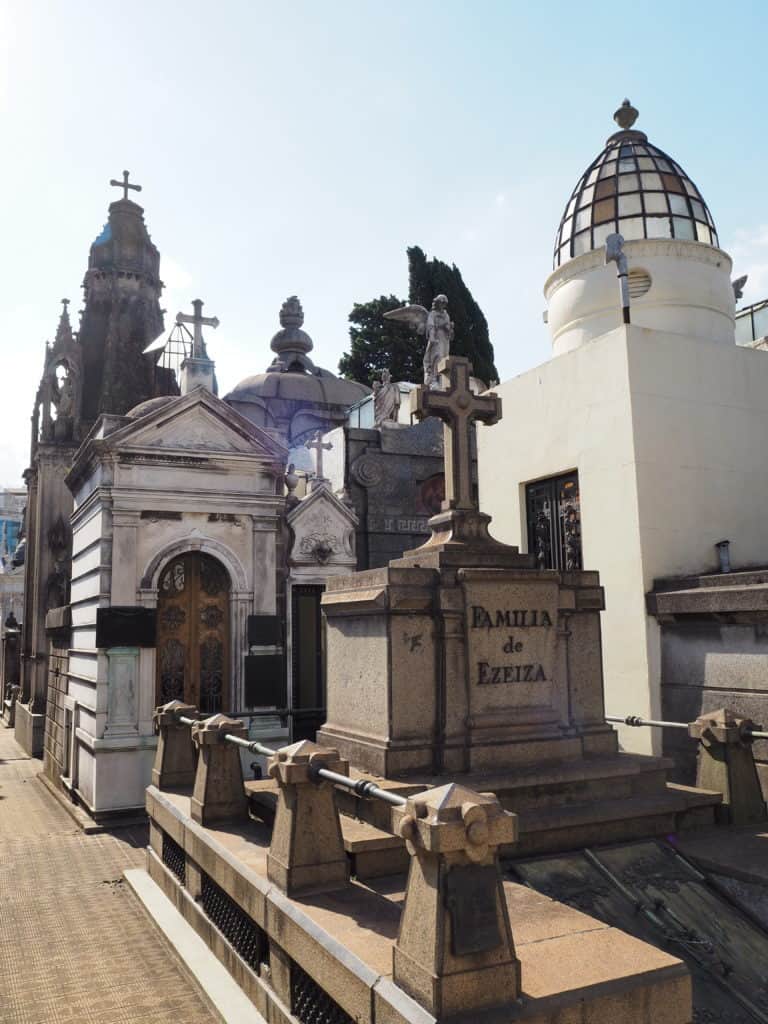
The cemetery also holds the remains of Eva Peron, or “Evita” as she was called by Argentines. She was the incredibly popular wife of Juan Peron, one of Argentinas most controversial presidents (controversial because he fought for workers rights and the poor, but was also rather friendly with fascists from Mussolini’s Italy and Nazi Germany). Evita herself came from a very poor family in western Argentina but rose to prominence as a TV and radio actress before eventually catching the eye of Juan Peron. As the young, beautiful first lady of Argentina, Evita would work to champion the cause of Argentina’s Descamisados, or “shirtless ones”, those who were the poorest of the poor. Due to her own humble upbringing, her words and actions resonated with those in the lower class of Argentina, and she became something of a cult phenomenon. Her death in 1952 at the age of 33 sent shockwaves through the country and caused a national outpouring of grief. It is impossible to travel in Argentina without seeing Evita everywhere, shops are named after her, monuments abound, and every time you look in your wallet she is looking up at you from the front of the 100 Peso note.
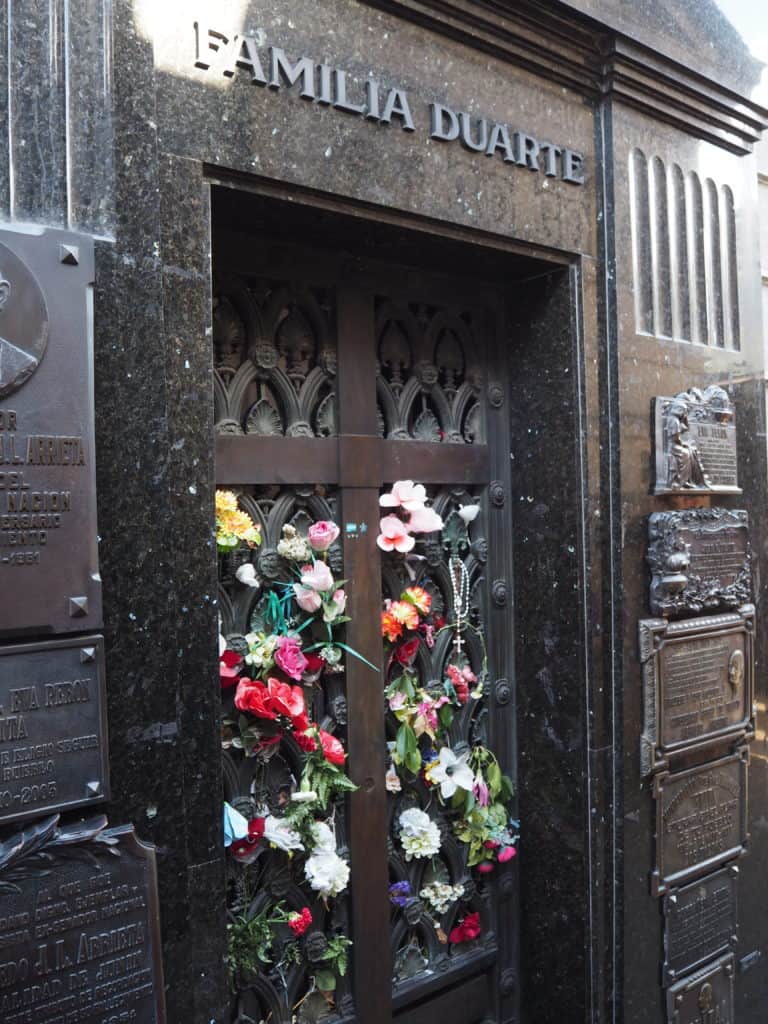
After exploring the Recoleta area I made my way to the Palermo Soho district. While famous for its nightlife, I was actually mainly interested in its street art. While some people may call it graffiti, the street art in Palermo is extraordinarily colorful and creative. The artwork made the area feel alive with color and gave the area a really cool vibe.

Continuing with the street art theme, I headed to the famous La Boca neighborhood of Buenos Aires. It was here in La Boca’s streets and clubs that Tango was born, and where it still holds sway. The neighborhood is alive with music and the homes and businesses are painted in a myriad of fantastic colors. To top it off, La Bombonera, the home stadium of the Boca Juniors, Argentina’s most famous soccer club, also calls this neighborhood home. Locals everywhere were decked out in the yellow and blue colors of the team. La Boca is already a hub of color and activity, so I can only imagine what the place is like on match day!
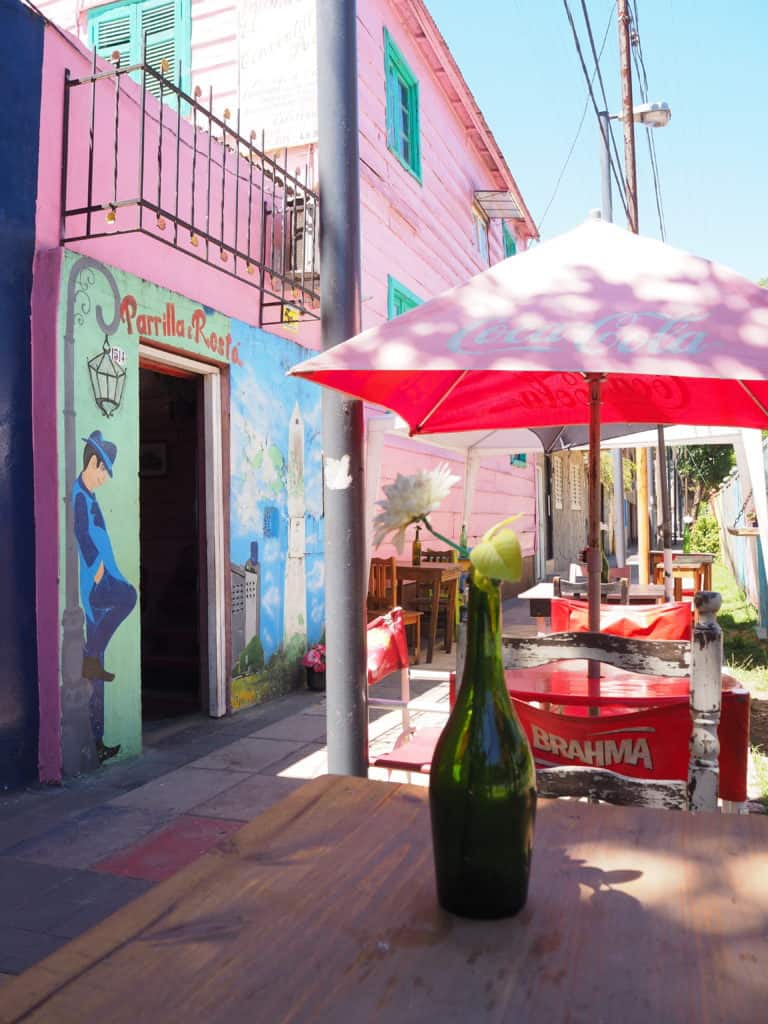

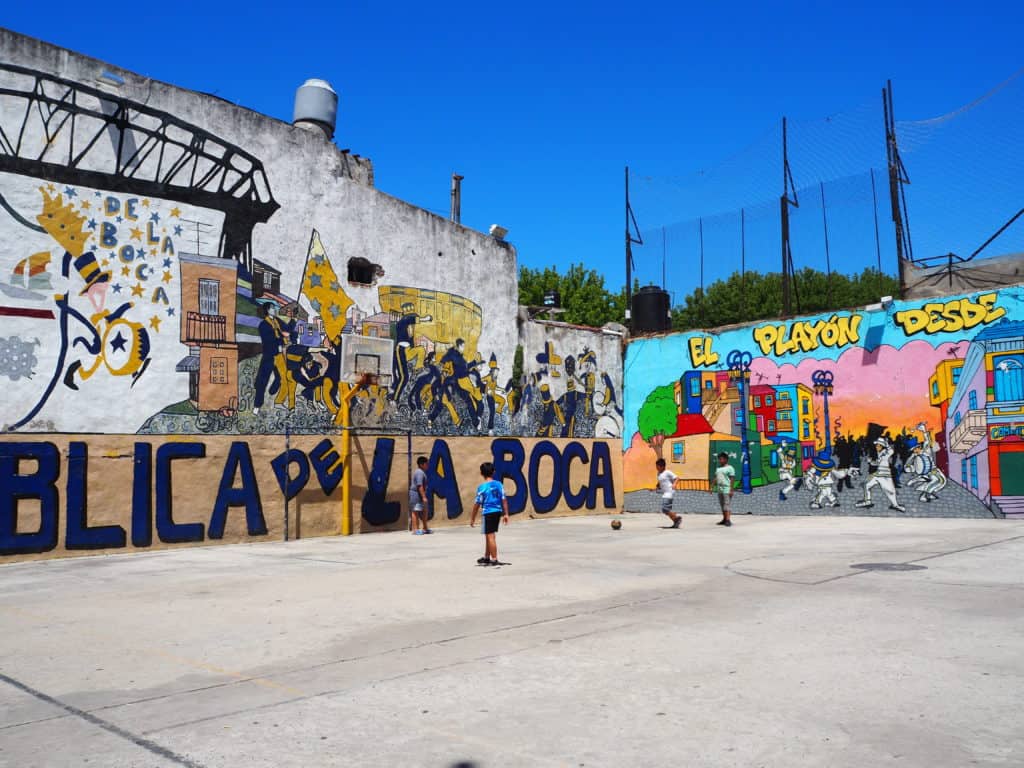

From there I wandered through the San Telmo street market, looking at all the wares on display from the street vendors. There wasn’t anything particularly special being sold in this street market (besides tons of Mate tea sets), but it was a beautiful sunny day and the market was centered around Derrado square, which was a hub of activity due to all the Tango dancers there. Street performers in most cities play music or do magic tricks, but in Buenos Aires, the majority of street performers dance Tango. I’m not a dancer myself, but Tango is mesmerizing. It’s a very sensual dance and the footwork is quite intricate.
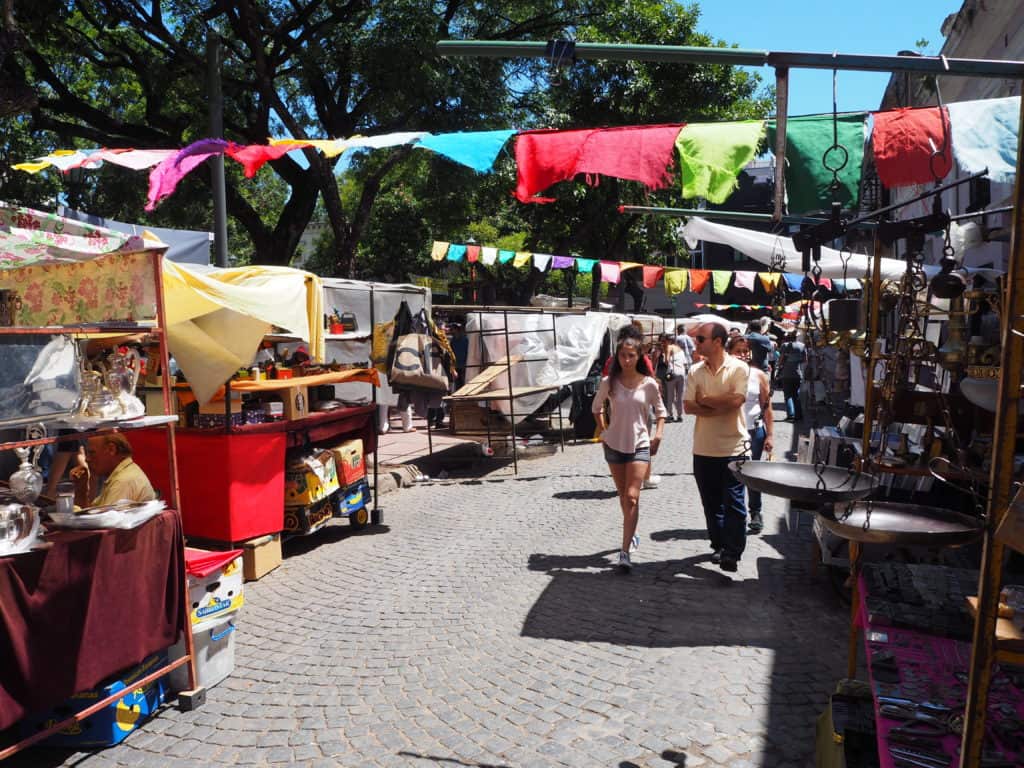
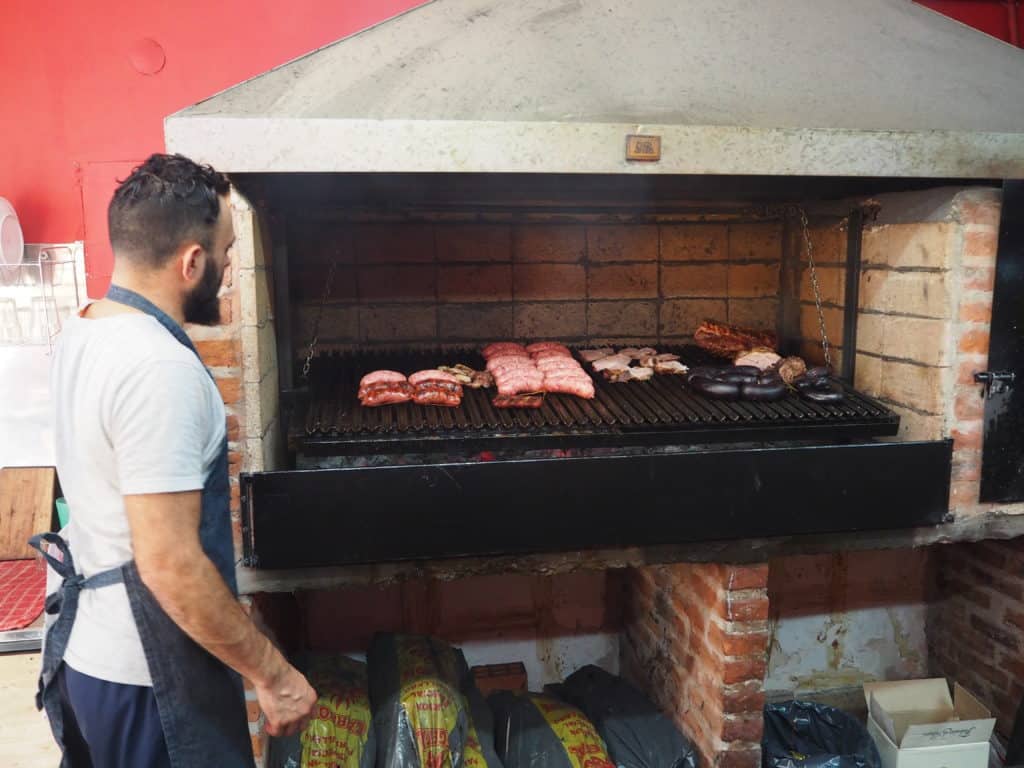

I especially enjoyed watching an older couple perform in the middle of the square. The two danced to the rhythm of guitar music being played by a younger man next to them. They danced together for a while, but then the man noticed an older woman in the crowd who was watching them intently. He called her over to him, took her hand, and began to dance with her. The woman was probably 75 and couldn’t move very well, but she clearly had danced Tango in her youth for she knew every step perfectly. The guitarist slowed the music down so the older woman could keep up, and as the couple danced to the slower rhythm I couldn’t help but smile. It was as if the woman was being transported back in time to the days of her youth, when she went out dancing with her friends. The memories seemed to come flooding back and her face lit up with a huge smile that was utterly contagious.
I left the square with a warm fuzzy feeling and a big smile on my own face. Now, every time I think of Buenos Aires, I’ll think of that beautiful old woman who loved to Tango!

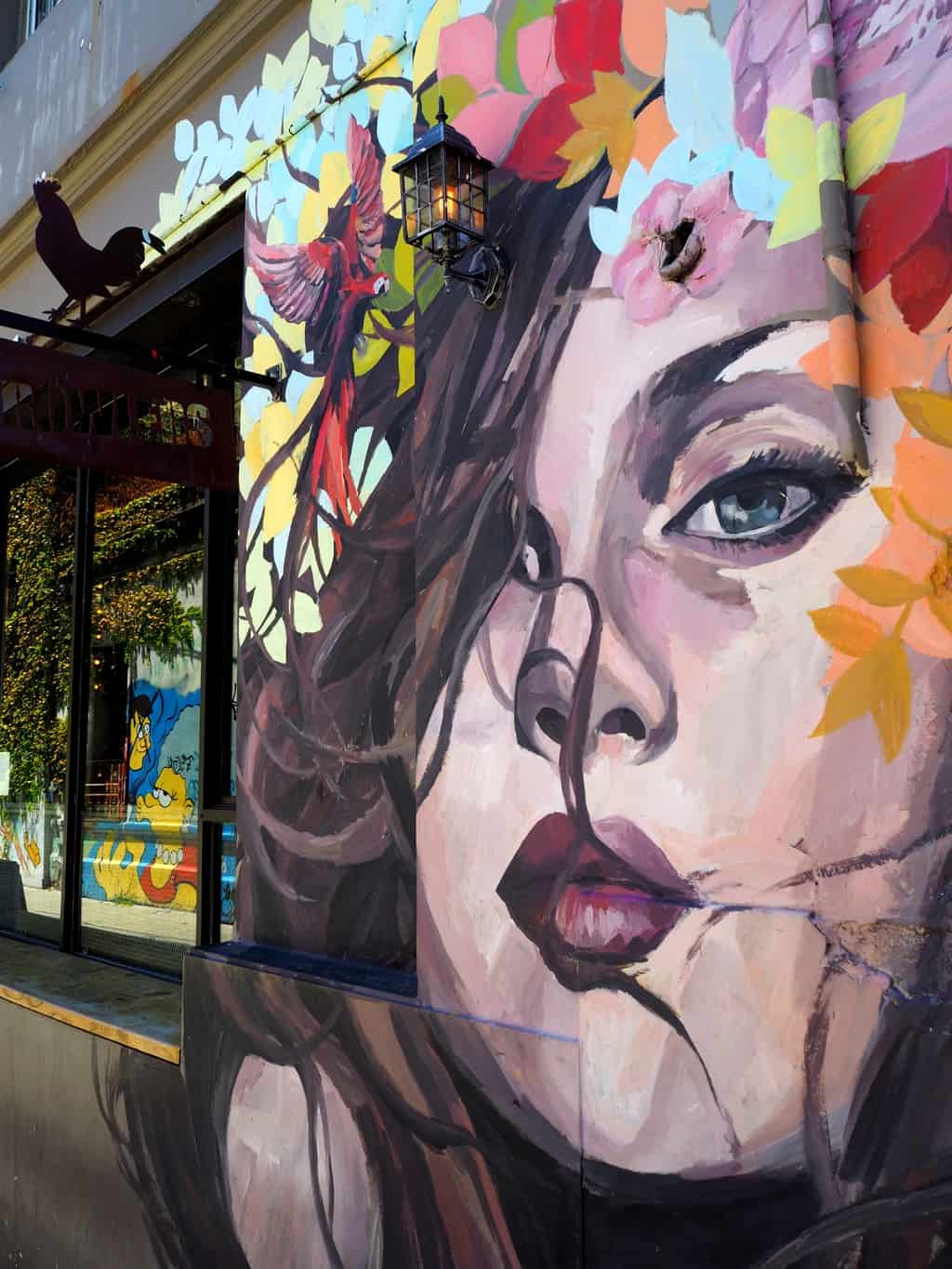
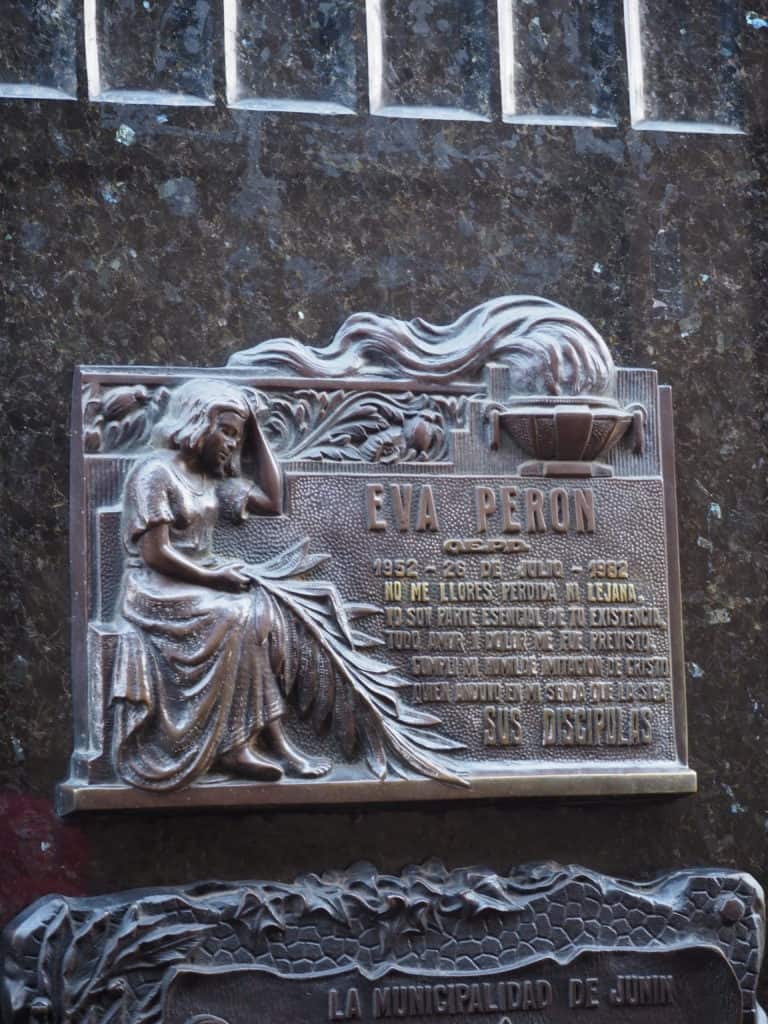
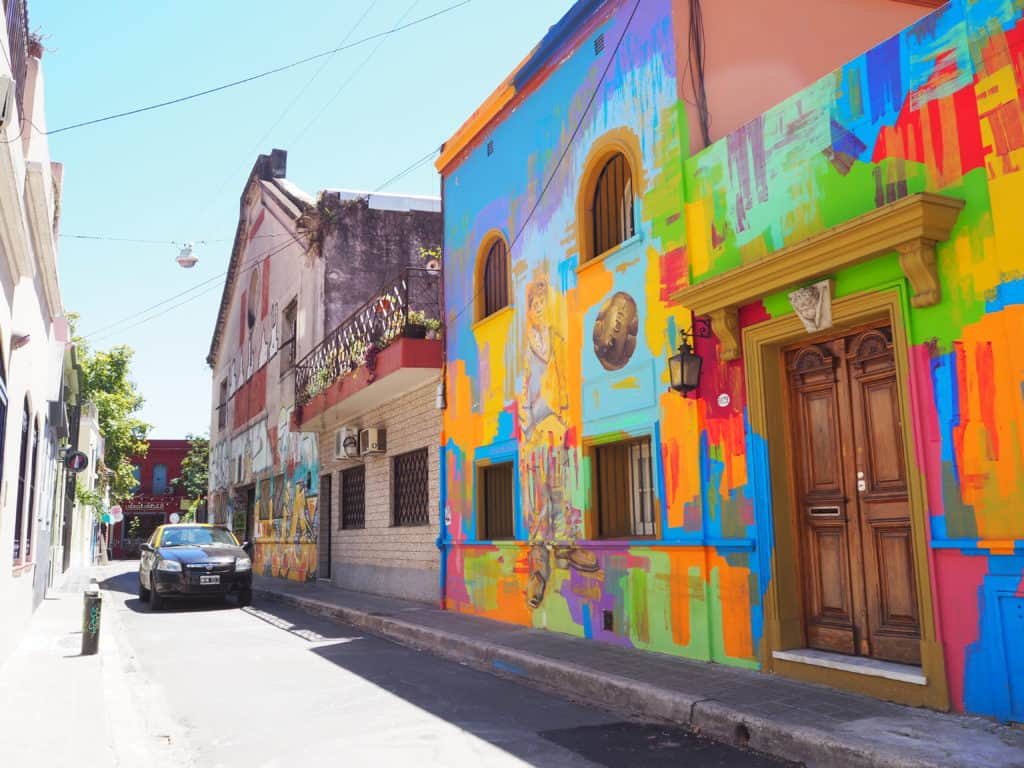
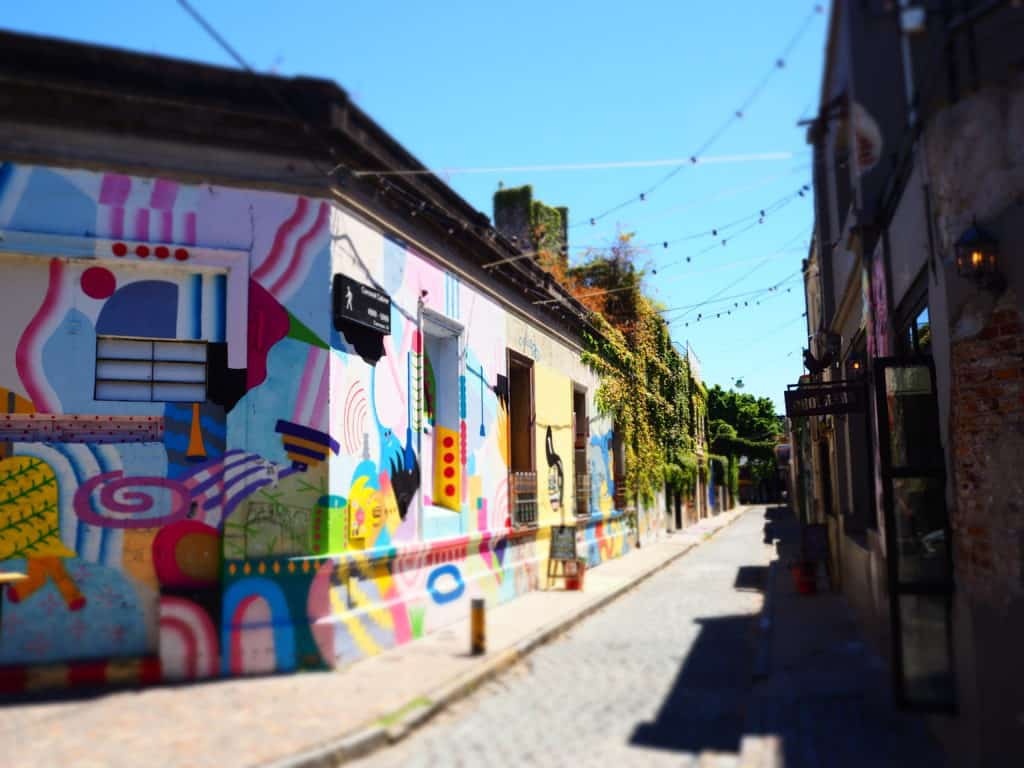

Comments
1 CommentKaren
Feb 27, 2018<3 <3 <3